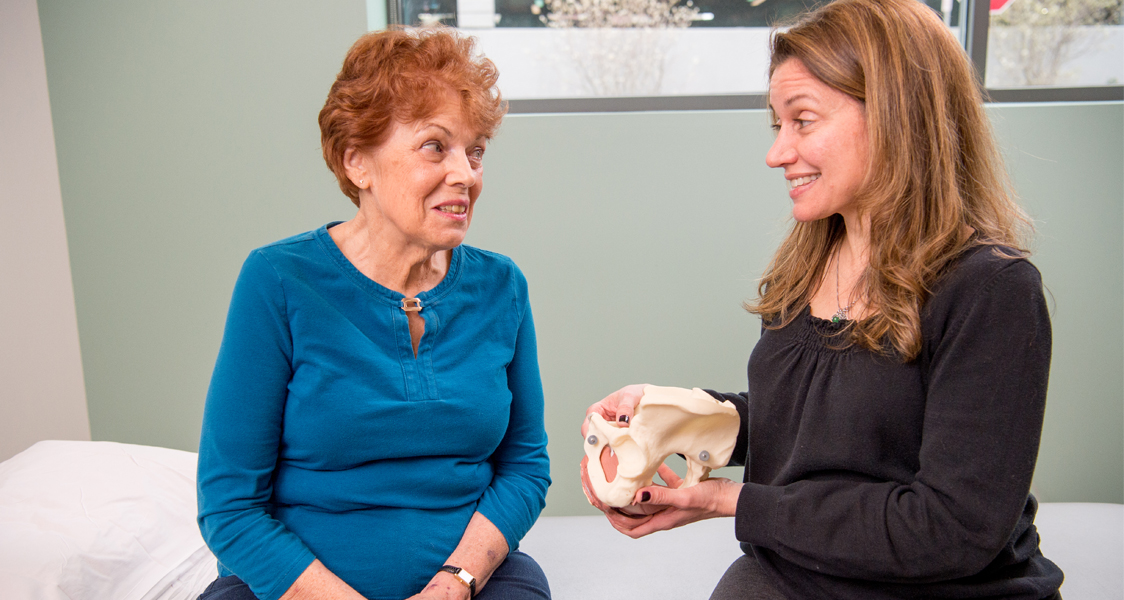If you’ve had physical therapy for a shoulder injury, knee replacement or even a stroke, you’ve probably done exercises, lifted weights and pulled colorful rubber bands in a gym full of other patients.
So you might be confused when your doctor recommends physical therapy for your pelvic pain or bowel and bladder symptoms.
“What does lifting weights have to do with my bladder?” you might ask.
Pelvic therapy is similar but different to other types of therapy. It’s similar because it aims to address problems in the neuromusculoskeletal system — your muscles, joints, connective tissue and nerves. But pelvic therapy services are different because they are delivered one-on-one in a private room.
Who Needs Pelvic Floor Therapy?
Pelvic floor therapy is recommended as a first-line treatment for many disorders of the pelvic region. If the symptoms stem from the pelvic floor, therapy is the treatment of choice for men, women and adolescents.
What Can Pelvic Floor Therapy Help With?
Pelvic therapy can help with problems that are often caused by muscle tone imbalances and strength of the pelvic floor and nearby structures that result in:
- Frequent urination
- Urinary urgency
- Unwanted loss of urine or stool (incontinence)
- Pain in the pelvis, hip, abdomen, thigh, low back,
- Sexual pain
- Constipation
- Pregnancy/post-partum pain or incontinence
How Does Pelvic Floor Therapy Work?
The first step is to evaluate the pelvic floor and assess the movement, strength and muscle tone in your low back, hips and abdomen through an internal exam
This exam uses manual palpitation with one finger and is different from a female gynecological exam, which uses instruments (speculum). The exam is not usually painful but will determine if therapy is appropriate and the appropriate plan of care.
What Techniques are Used in Pelvic Floor Therapy?
Depending on the problems identified, treatment may include:
- Strengthening or stretching exercises of the trunk, legs, or pelvic muscles
- Techniques to improve shortened or overactive pelvic muscles
- Coordination exercises
- Education in self-management and prevention
- Biofeedback for either strengthening or relaxation of the pelvic muscles
- Modalities like heat, ice, or electrical stimulation.
Strengthening exercises can often be a component of the therapy, but do not necessarily require gym equipment.
Does Pelvic Floor Physical Therapy Work?
Pelvic floor therapy is usually very effective at reducing symptoms. Most patients begin to see a reduction in pain and other issues after only six to eight sessions.
To learn how pelvic floor therapy can help you, call Penn Therapy & Fitness at 1-877-969-7342

